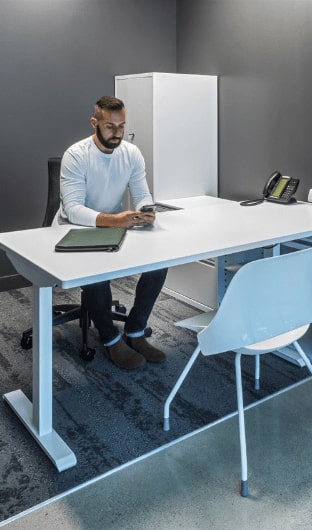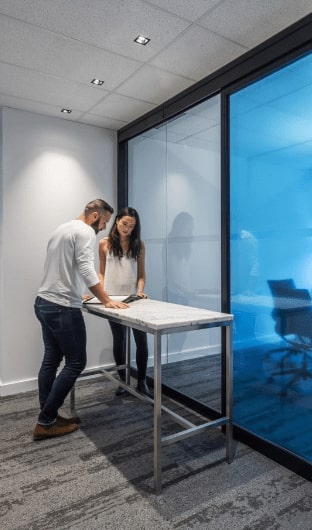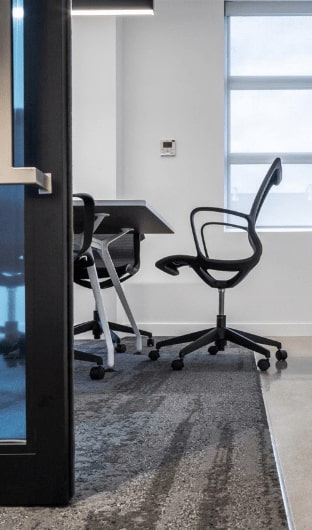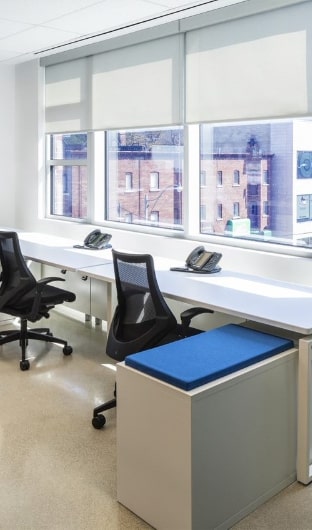
Essentials Of Patient-Centred Healthcare Furniture
In the realm of healthcare, the significance of appropriate furniture cannot be overstated. Healthcare furniture plays a crucial role in creating a conducive environment for patients and healthcare providers alike. From ergonomic design to durability and infection control features, healthcare furniture is tailored to meet the unique demands of medical settings. This article delves into the essential aspects of healthcare furniture, exploring its impact on patient care, staff well-being, and overall operational efficiency.
Principles Of Patient-Centred Design
Importance Of Patient Comfort
Patient comfort is a cornerstone of effective healthcare, playing a crucial role in the healing and recovery process. When patients feel comfortable and at ease, their bodies and minds are better positioned to heal. Comfort can be physical, such as providing a soft bed, supportive seating options, and a quiet room, as well as emotional, through compassionate communication and a supportive environment. This holistic approach to patient care can significantly reduce stress, anxiety, and discomfort, which in turn can enhance the body’s natural healing processes. Additionally, a comfortable patient is more likely to adhere to medical advice and participate actively in their care, further promoting a swift and effective recovery. Prioritizing patient comfort not only improves individual patient outcomes but also elevates the overall quality of healthcare services.
Inclusive Furniture For Patient Comfort
Inclusive furniture in a patient-centred facility plays a crucial role in promoting accessibility, comfort, and dignity for all individuals. This type of furniture is thoughtfully designed to cater to people of varying abilities, ages, and sizes, ensuring that everyone feels welcomed and accommodated. Features such as adjustable height tables, chairs with armrests, and easy-to-clean surfaces not only enhance the functionality of the space but also contribute to a more hygienic and user-friendly environment. Prioritizing inclusivity in furniture choices, healthcare facilities can foster a sense of belonging and respect, ultimately improving the overall patient experience and satisfaction.
Creating A Welcoming Environment
Design spaces that exude warmth and tranquility, creating a welcoming atmosphere. Incorporate colour schemes and textures that promote relaxation and aid in the healing process. Furniture arrangements should encourage social interaction among patients and provide adequate support.
Optimizing Space In Healthcare Settings
Select multi-purpose furniture solutions to maximize functionality within limited spaces. Implement modular designs that can be easily reconfigured to cater to various needs. Ensure clear pathways and accessibility within healthcare settings to enhance movement efficiency.
Improving Exam Spaces For Comfort
Prioritize patient privacy and comfort in exam rooms. Incorporate soft furnishings to ease tension during medical examinations. Design flexible layouts accommodating various medical procedures and equipment.
Role Of Ergonomic Healthcare Furniture
How Do Ergonomic Enhancements Impact Healthcare Furniture?
Ergonomic enhancements in healthcare furniture aim to improve user comfort, reduce strain, and enhance productivity. Features such as adjustable height, proper lumbar support, and easy reach play a crucial role in ensuring the well-being of both patients and healthcare professionals.
Ergonomic Solutions For Workstations
- Incorporate sit-stand desks to encourage movement and reduce fatigue.
- Integrate keyboard trays and monitor stands to promote proper posture.
- Provide storage solutions that minimize clutter and enhance workflow efficiency.
Innovative Trends In Hospital Furniture Design
Use Of Sustainable Materials
Select eco-friendly materials to reduce the environmental impact in healthcare settings. Opt for materials that are recyclable and biodegradable. Promote health and safety by using non-toxic finishes and fabrics, ensuring a healthier environment for patients and staff. Consider furniture made from sustainable sources like bamboo or recycled materials.
Support sustainability initiatives through furniture recycling and repurposing programs. Extend the lifespan of furniture by refurbishing and reusing items whenever possible. Engage with reputable manufacturers and furniture dealers that prioritize sustainability in their processes.
Features For Infection Control
Incorporate antimicrobial surfaces in hospital furniture to minimize the spread of infections. Choose materials that inhibit the growth of bacteria and viruses, enhancing patient safety. Design furniture with smooth, easy-to-clean surfaces, facilitating effective sanitation practices in healthcare facilities.
Utilize removable and washable covers on furniture pieces to maintain high hygiene standards. Enable easy cleaning and disinfection procedures to prevent the transmission of pathogens. Ensure that all patient room furniture meets stringent infection control guidelines.
Technology Integration In Furniture
Embed charging stations and connectivity options into hospital furniture designs to enhance patient experience. Provide convenient access to power sources for electronic devices. Utilize smart furniture that adapts to user needs and preferences, offering personalized comfort solutions.
Telehealth Features For Enhanced Communication
Telehealth is broadly defined as the use of communication technologies to provide health care at a distance. Incorporate telehealth capabilities into waiting and exam room furniture to support virtual consultations. Equip furniture with integrated technology for seamless communication between patients and healthcare providers. Stay updated with the latest technological advancements in healthcare furniture design.
By prioritizing patient comfort, staff efficiency, and aesthetic appeal, healthcare facilities can significantly impact the overall well-being of individuals under their care. Embracing these elements not only enhances the physical space but also contributes to fostering a sense of trust and healing for patients.
Conclusion
As the landscape of healthcare continues to evolve, staying abreast of advancements in furniture design remains crucial. Healthcare professionals and facility managers are encouraged to explore further innovations, collaborate with designers, and prioritize the well-being of both patients and staff.
If you are considering a customized healthcare furniture project, reach out to Harkel Office. As one of Ontario’s leading healthcare furniture providers, we offer tailored solutions designed to meet both your needs and budget. Our extensive selection of hospital furniture comes in a variety of colours, designs, and styles ensuring that your specific requirements and aesthetic preferences are perfectly matched. Contact us today to get started.





